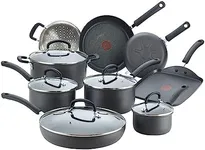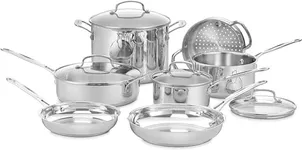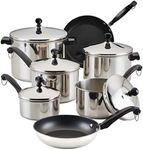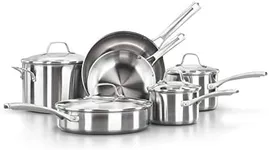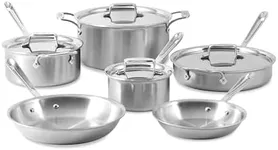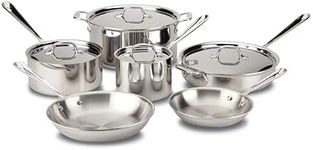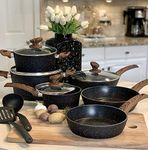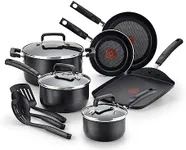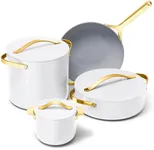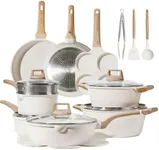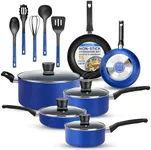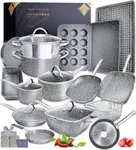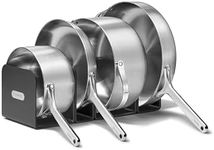Buying Guide for the Best Pot And Pan Sets
Choosing the right pot and pan set can significantly enhance your cooking experience. The right set will not only make cooking more enjoyable but also ensure that your food is cooked evenly and efficiently. When selecting a pot and pan set, consider the materials, the types of pots and pans included, the compatibility with your stove, and the ease of cleaning. Understanding these key specifications will help you make an informed decision that suits your cooking style and needs.MaterialThe material of the pots and pans affects heat conductivity, durability, and ease of cleaning. Common materials include stainless steel, non-stick, cast iron, and copper. Stainless steel is durable and resistant to rust and staining, making it a good all-around choice. Non-stick pans are great for low-fat cooking and easy cleanup but may not be as durable. Cast iron retains heat well and is excellent for searing, but it requires more maintenance. Copper offers superior heat conductivity but can be expensive and requires regular polishing. Choose a material based on your cooking habits and maintenance preferences.
Number of PiecesPot and pan sets come in various sizes, typically ranging from 5 to 15 pieces or more. A basic set might include a couple of saucepans, a frying pan, and a stockpot. Larger sets may include additional items like sauté pans, steamer inserts, and more. Consider the types of dishes you frequently prepare and the number of people you cook for. If you cook a variety of dishes, a larger set with more specialized pieces might be beneficial. For simpler cooking needs, a smaller set with essential pieces will suffice.
Heat ConductivityHeat conductivity refers to how evenly and quickly a pot or pan heats up. Materials like copper and aluminum are excellent conductors of heat, ensuring even cooking and reducing the risk of hot spots. Stainless steel, while durable, is not as good a conductor unless it has an aluminum or copper core. If you often cook delicate dishes that require precise temperature control, prioritize sets with high heat conductivity. For general cooking, a set with decent conductivity will be adequate.
Stove CompatibilityNot all pots and pans are compatible with every type of stove. Some materials, like cast iron and stainless steel, work well on all stove types, including induction. Non-stick and aluminum pans may not be suitable for induction stoves unless they have a magnetic base. Check the compatibility of the set with your stove type to ensure optimal performance. If you have an induction stove, make sure the set is specifically labeled as induction-compatible.
Ease of CleaningThe ease of cleaning can significantly impact your overall cooking experience. Non-stick pans are generally the easiest to clean, as food does not stick to the surface. Stainless steel can be more challenging to clean, especially if food burns onto the surface. Cast iron requires special care to maintain its seasoning. Consider how much time and effort you are willing to invest in cleaning your cookware. If you prefer low-maintenance options, non-stick or dishwasher-safe stainless steel might be the best choice.
Oven SafetySome recipes require transferring pots and pans from the stovetop to the oven. Not all cookware is oven-safe, and those that are may have different temperature limits. Stainless steel and cast iron are typically oven-safe at high temperatures, while non-stick pans may have lower temperature limits. If you frequently cook dishes that require oven use, ensure that the set you choose is oven-safe and check the maximum temperature it can withstand.
